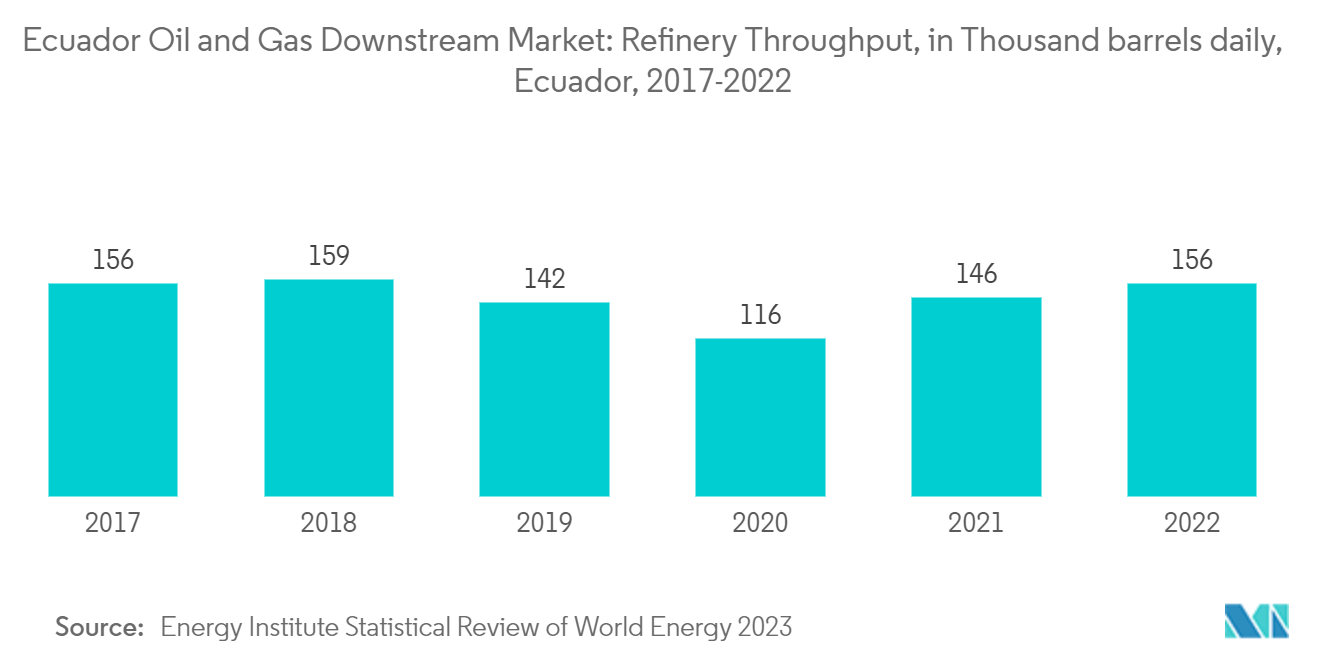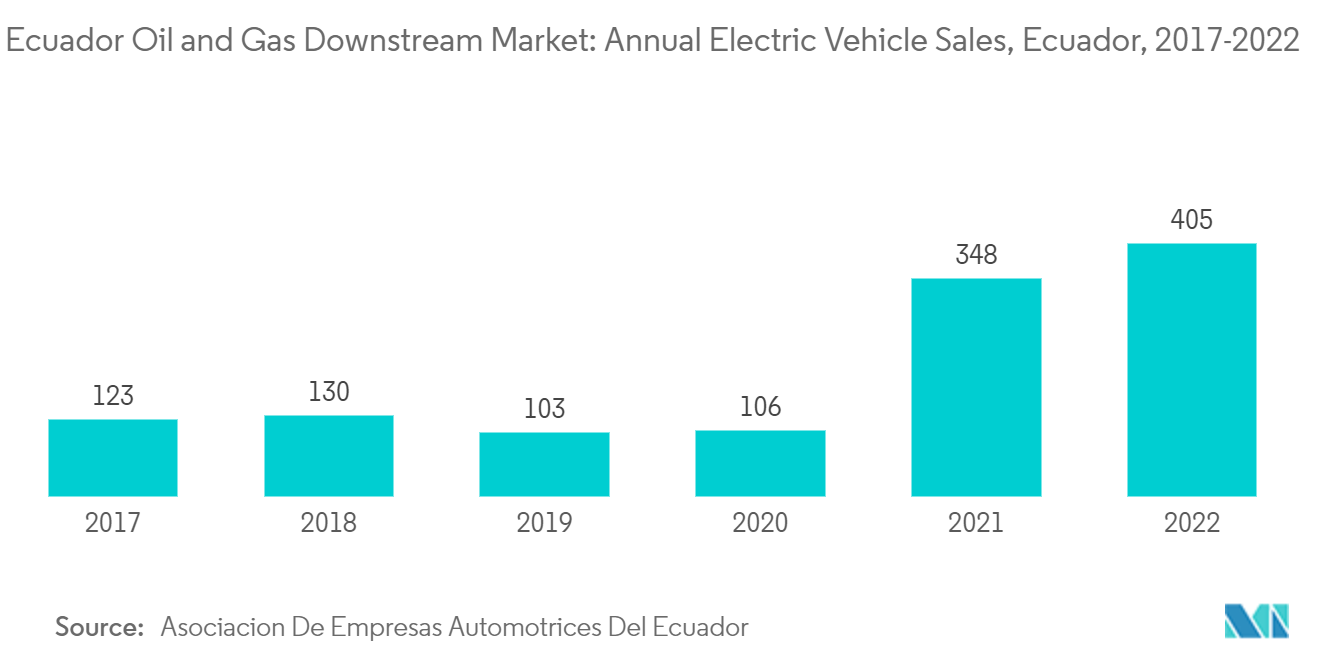Market Trends of Ecuador Oil And Gas Downstream Industry
Refining sector is Expected to Witness a Significant Growth
- Ecuador had a refining capacity of about 186 thousand barrels per day (b/d) of oil in 2022. Oil is the main component of Ecuador's energy mix.The oil sector accounts for more than half of the country's export earnings in Ecuador; the United States is one of Ecuador's largest crude oil importers. Despite having significant oil and gas reserves, Ecuador is primarily a crude exporter, due to which the country imports most of its refined hydrocarbon requirements.
- Ecuador's refining capacity comes from three refineries that are old and need to be modernized. Due to their age, refinery utilization rates remain well below 85% despite high demand. In 2022, the average refinery throughput stood at 156 thousand barrels per day, with a refinery utilization factor of 83.8%.
- In June 2022, Ecuador's state-owned oil and gas utility Petroecuador launched a new tender inviting proposals from companies interested in becoming strategic partners and investors in the rehabilitation, modernization, and integral operation of its 110,000 b/d Esmeraldas refinery on the Pacific Coast.
- As Ecuador looks to invest and modernize its refinery sector, this is expected to increase the growth of the Ecuador oil and gas refining market during the forecast period.

Growing Fleet of EVs is Likely to Hinder the Market
- Technology change and environmental concerns to encourage EV adoption are the most uncertain factors affecting the market's growth. Government policies incentivizing or mandating EVs or other alternatives are likely to reduce oil demand. Various policies and incentives, lower vehicle prices, increased driving range, faster charging times, and zero-emission vehicles paving the way for a cleaner future are expected to boost the EV market.
- In 2022, according to the Asociación De Empresas Automotrices Del Ecuador, electric vehicle sales in Ecuador reached 405, up by more than three times from both 2021 and 2020. This highlighted the fact that the Ecuadorian EV market is expanding rapidly.
- As a part of its electromobility policy, Ecuador expects to have some 10,000 electric vehicles by 2025, including public transport buses, taxis, light cargo trucks, and other light vehicles. By 2030, it aims to reach 100,000 vehicles, and by 2040, in the massification stage, there are expected to be more than 750,000 electric vehicles in circulation.
- Further, in May 2023, BYD announced partnership with Andor Corporation to enter Ecuadorian zero emission passenger vehicle market.
- The above factors are expected to hinder the growth of the conventional IC engine-based vehicle market. This, in turn, is expected to directly impact petroleum products such as diesel and gasoline.


